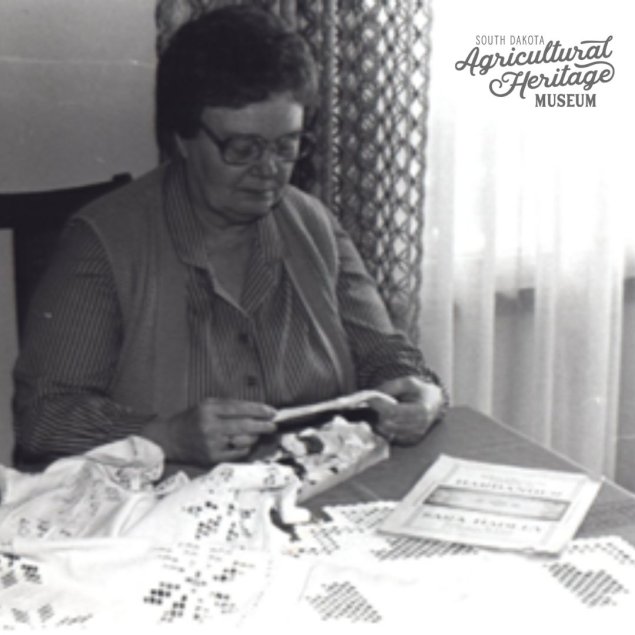
Pictured here is Oriska Strochien. Oriska was known for her fine needlework and can be seen here seated at the dining room table with several hardanger pieces set before her. Oriska was an active member of Extension Homemakers. She joined the Willing Workers Extension Homemakers Club in 1949. She also served on the Deuel County Extension Board and the State Advisory Board of Extension Service. When she was with the Extension Homemakers, she held all offices at all levels which included a three-year term as the state president.
Hardanger is a form of embroidery that uses a combination of stitches to create intricate designs. Satin stitch, drawn work, cut work, white work and needle weaving are some of the stitches and techniques used. Traditionally, hardanger uses the same color fabric and floss (thread). Popular during the Renaissance Period (1300s-1600s), hardanger is believed to have been brought to Italy from the Middle East. Norwegian explorers and traders brought hardanger to Norway and the Norwegians made it their own. Hardanger is used to decorate clothing, towels, aprons, wall hangings, bedding and other home décor. This beautiful needlework is named for the Hardanger region of Norway.

